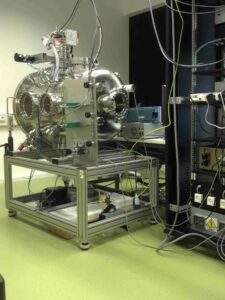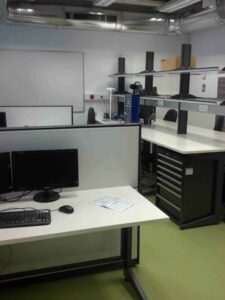The Aerospace Plasma Laboratory (APL) was founded in 2015 by Asst. Prof. Igal Kronhaus for carrying out a program of research and development of innovative miniaturized plasma devices for propulsion applications. APL is currently active in two areas of research:
The laboratory goal is to enable advanced understating of the plasma processes in these devices and enable their realization. The approach to research in APL involves a full set of activities: starting from a simplified physical-mathematical or phenomenological model, then development of a more realistic computer simulation and finally the design, implementation, and testing of a specific device.
APL is part of the Faculty of Aerospace Engineering and is located in the Asher Space Research Institute, Technion. The centrepiece of the Aerospace Plasma Laboratory is the vacuum test facility. It is a cylindrical vacuum chamber, 1.0 m long and 0.6 m in diameter, with multiple viewing ports and access ports. The vacuum chamber design provides great flexibility in the type of equipment that can be installed inside and outside of the chamber. A rapid testing cycle is possible where the pumping system allows evacuation to pressure levels of less than 10-6 mbar in less than an hour. The illumination around the vacuum test facility is controlled to allow for sensitive optical measurement to be performed.
APL is equipped with power supplies to generate both DC, pulsed, and AC plasmas. A number of specialized diagnostic tools are available, including a micro-Newton thrust balance, a fast ICCD camera with a gating time below 5 ns, a spectrometer, various electrostatic probes, and linear stages for equipment positioning under vacuum conditions. In addition to the vacuum test facility and diagnostic equipment the laboratory is equipped with a large workbench area to support component level testing and assembly. The laboratory also serves as an office space for students and research staff.

